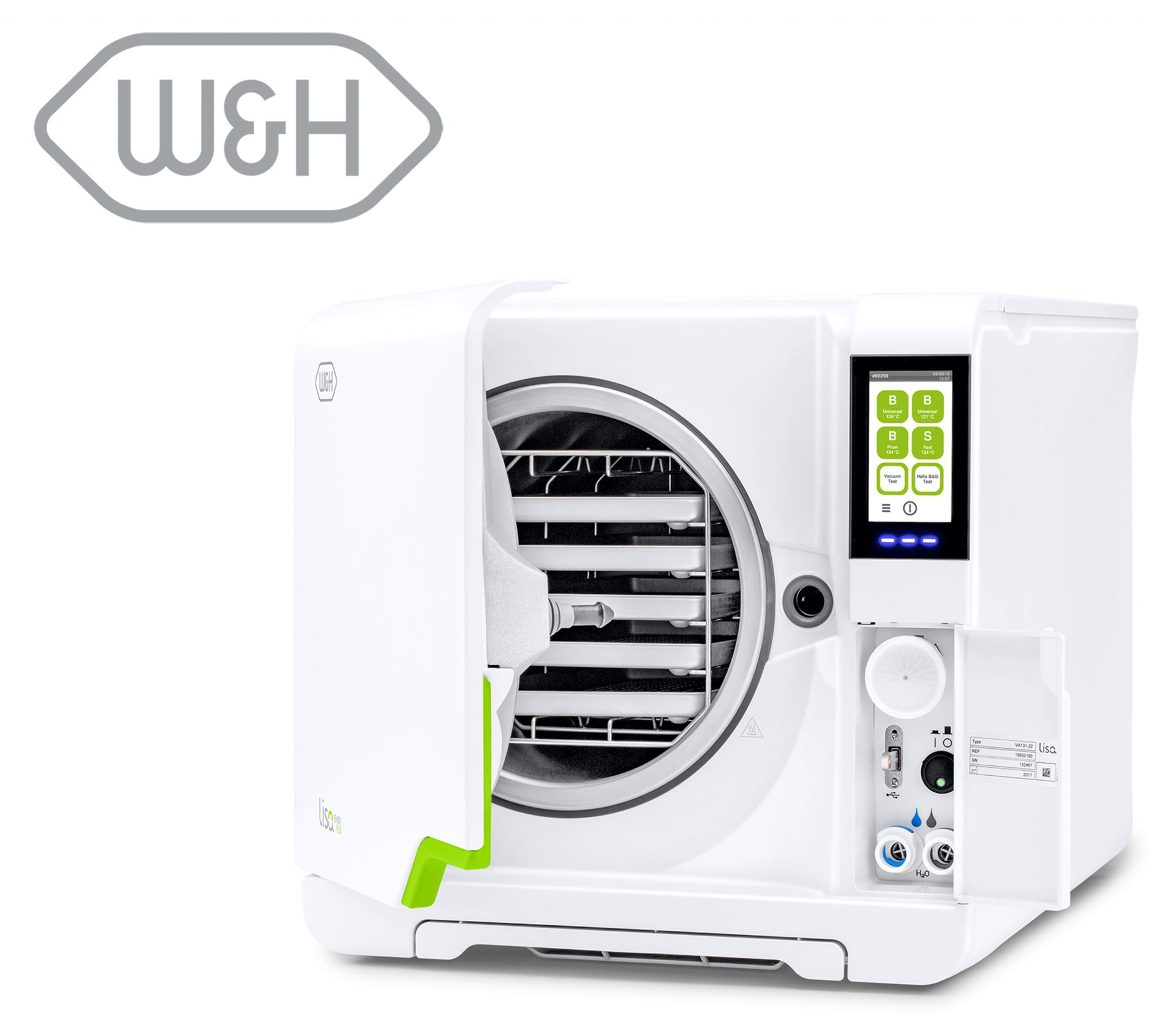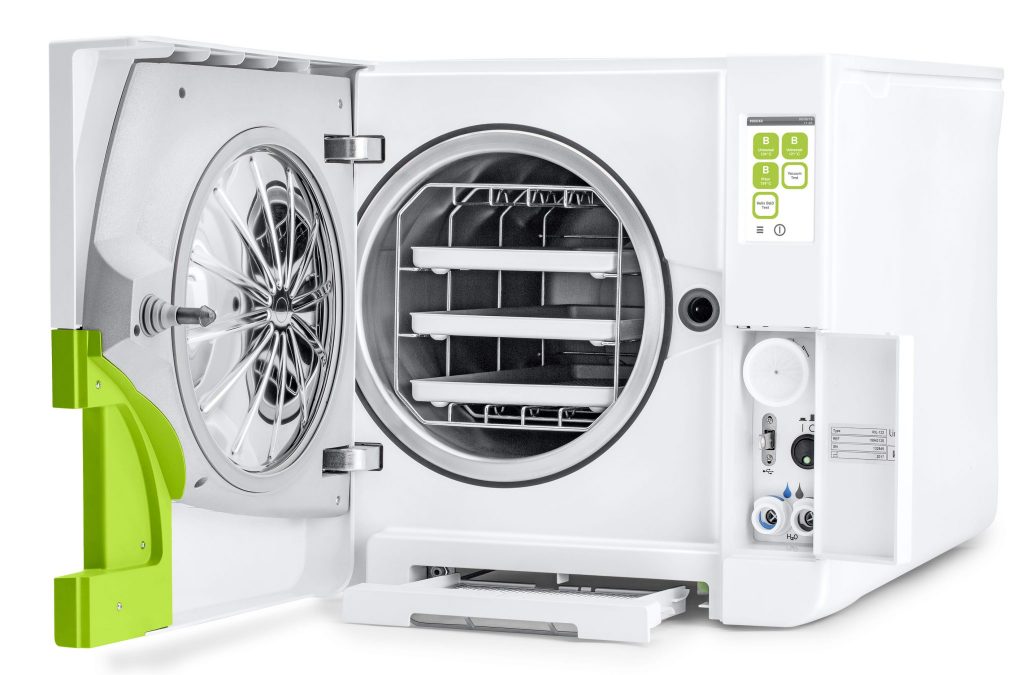Sterilization: Back to basics
Featured Products Promotional FeaturesPosted by: Dental Design 21st September 2020

Dental practices today face the challenges of maintaining and improving productivity, whilst ensuring that patient and staff safety remains a top priority. At times, this can feel unachievable. However, industry advances have empowered practices to develop safer processes and ensure greater workflow efficiency, thus improving the standard of care provided. Areas of clinical practice where this can be easily demonstrated include decontamination and, in particular, sterilization of dental instruments. Of course, establishing a streamlined sterilization process requires consideration of several factors.
Instruments
There are multiple steps involved with processing instruments, which include the use of specialised equipment. Every dental practice should have policies and procedures in place for containing, transporting, and handling dental instruments that may be contaminated with blood or other bodily fluids. Dental handpieces and their associated attachments – including low-speed motors and reusable prophylaxis angles – should always be heat sterilized between patients, as opposed to high-level or surface disinfected. In this regard, it is important to take heed of manufacturer’s guidelines on how best to sterilize such tools.
Dental instruments are divided into three categories: critical, semi-critical and non-critical items. Those that are used to penetrate soft tissues or bone are critical items, and must be sterilized before and after use. Semi-critical items are typically instruments that come into contact with mucous membranes, but are not used for penetrating soft tissues or bone. These instruments should be sterilized in the same way as critical items. As non-critical instruments are used on intact skin only, an intermediate level of disinfection should be applied to these products after use, even if there are no visible signs that they have been contaminated with blood or other potentially infectious materials. Single-use items or instruments that cannot be satisfactorily sterilized must be disposed of after use.
Protocol
According to HTM 01-05 guidelines, dental practices should have a nominated lead member of staff responsible for infection prevention and decontamination.[i] This individual should be in charge of developing a standardised, written protocol for decontamination, according to evidence-based regulations and standards. By implementing such a strategy, the dental team is more likely to achieve a reproducible system for consistently cleaning and sterilizing instruments, which can ultimately help improve the efficiency of decontamination procedures for greater productivity. Infection prevention and control policies should be tailored to the unique needs and preferences of the practice, and reassessed regularly to ensure their efficacy.
Although it is right that there is a lead co-ordinator, it is important that the entire dental team – including new members of staff – are educated on decontamination, particularly in terms of how to use the relevant equipment and maintain it on a day-to-day basis. This ensures team members benefit from the flexibility of being able to assume the role of cleaning and sterilizing instruments in case a problem arises – for instance, if the practice is operating under a reduced number of staff.
Staff training
It is the responsibility of the practice owner to ensure that there are systems in place to support the on-going education of the dental team in terms of decontamination. In fact, HTM 01-05 guidelines recommend that as part of verifiable ECPD, dental professionals should receive no less than five hours’ training in this area over a period of five years.i There are plenty of online ECPD courses that cover decontamination, but clinicians can also take advantage of training in-practice, which will enable them to update their skills and knowledge through a combination of theoretical and hands-on exercises. ECPD training is even available from some handpiece manufacturers.
In terms of sterilization, staff should know what kind of sterilizer is in the practice and what types of cycles the sterilizer supports. Additionally, the dental team should be familiar with how to prepare the wide range of instruments used in the practice for sterilization, paying attention to new instruments, loading configuration, lubrication, inspection, wrapping and labelling. Furthermore, staff should be educated on how to store the instruments after they have been sterilized. Having a comprehensive understanding of record management is also essential.
 The sterilizer you choose for processing dental instruments will make a significant difference to the efficacy of your decontamination protocol. The preferred method of sterilizing instruments is delivering saturated steam under pressure at the highest temperature and longest holding time compatible with the instrument. For this reason, type B vacuum sterilizers are recommended, as they can also be used to sterilize hollow instruments and porous loads.
The sterilizer you choose for processing dental instruments will make a significant difference to the efficacy of your decontamination protocol. The preferred method of sterilizing instruments is delivering saturated steam under pressure at the highest temperature and longest holding time compatible with the instrument. For this reason, type B vacuum sterilizers are recommended, as they can also be used to sterilize hollow instruments and porous loads.
Leading manufacturer, W&H, offers a full range of top-quality autoclaves, including the Lara type B vacuum sterilizer with Eco Dry technology, which can process a typical 2kg load cycle in 38 minutes. The next generation Lisa type B vacuum sterilizer from W&H also offers intuitive connectivity and comprehensive traceability down to the individual instrument or kit via the EliTrace system. The Lisa sterilizer’s Eco Dry+ technology also reduces the cycle time – with an S class cycle time of 13 minutes, and B class cycles from 28 minutes – thus optimising energy consumption for cost-effective sterilization with each load.
Dental professionals are responsible for ensuring the safety of each other within the practice, but also the health and wellbeing of their patients. As such, it is vital that individuals maintain detailed knowledge of the key factors relating to sterilization of dental instruments.
To find out more about the products and training that W&H can offer visit www.wh.com/en_uk, call 01727 874990 or email office.uk@wh.com
[i] Department of Health. (2013) Health Technical Memorandum 01-05: Decontamination in primary care dental practices. Link: https://assets.publishing.service.gov.uk/government/uploads/system/uploads/attachment_data/file/170689/HTM_01-05_2013.pdf. [Last accessed: 25.06.20].









